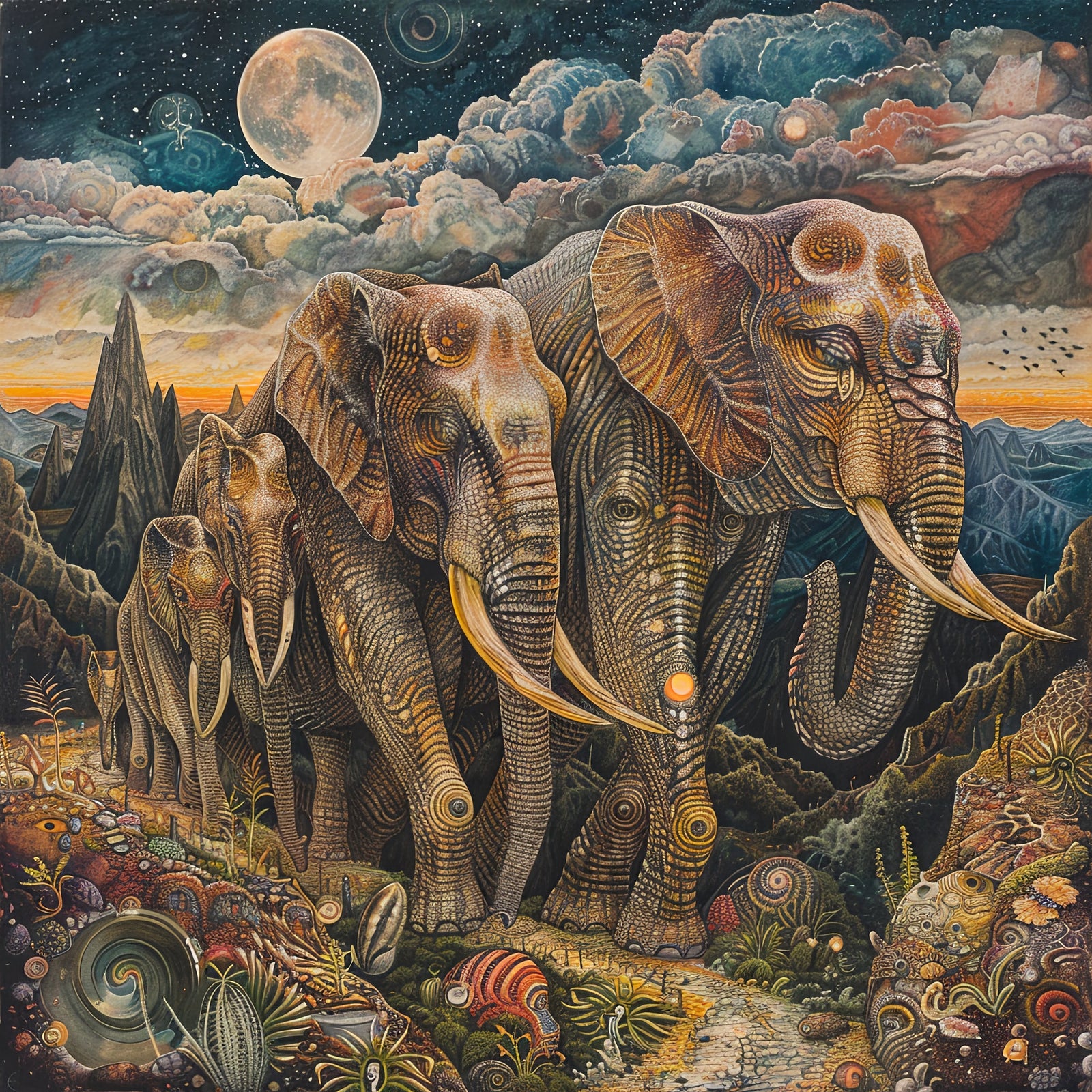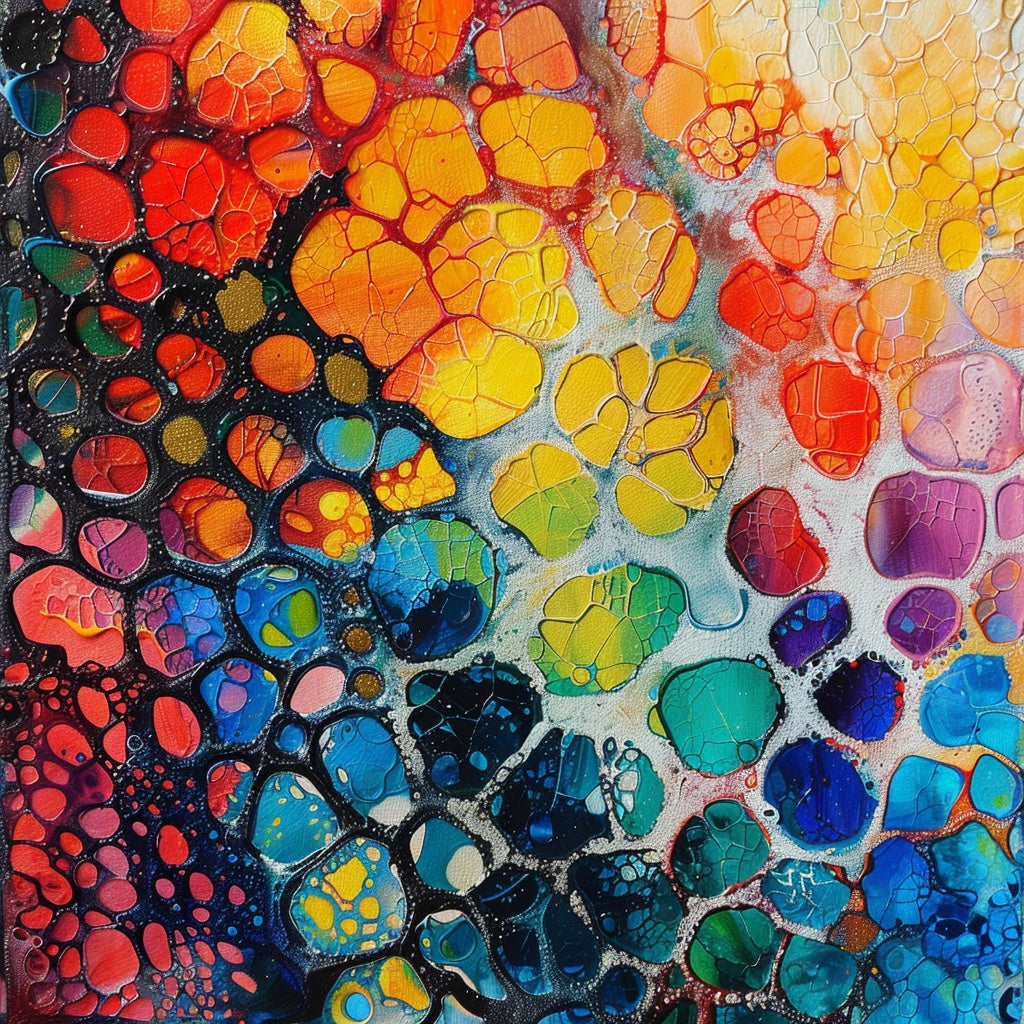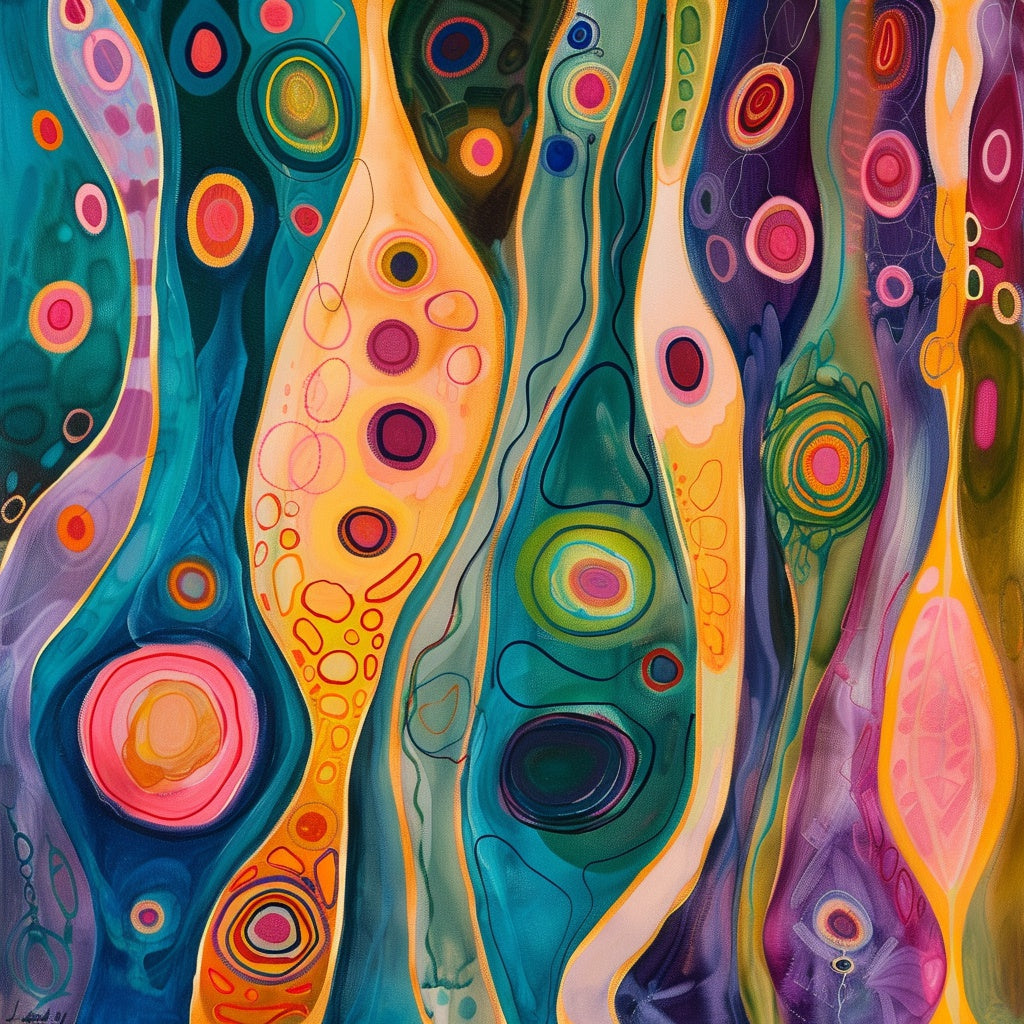The Rise of AI: Transforming Creative Industries
Artificial intelligence is rapidly changing the landscape of various industries, particularly those considered creative. This article explores the profound impact of AI on music, fashion, academia, and literature, examining how it enhances creative processes and efficiency and redefines traditional concepts of authorship and artistry.
Table of Contents
AI in the Music Industry
AI in the Fashion Industry
AI in Academia
AI in Literature
AI in the Music Industry
The music industry is undergoing a significant transformation due to the integration of AI, affecting everything from creation and production to analysis and discovery.
Music Creation and Production
AI tools empower musicians and producers, offering new avenues for creating and refining their work. AI algorithms can generate melodies and harmonies, assist in composing complex arrangements, and even produce original songs from scratch. For instance, an AI can generate basic melodies in under 2 seconds. Imagine inputting a few keywords or a basic melody and having an AI tool generate a fully produced track with instrumentation and vocals. This technology is also being used to enhance archival material; a recent Beatles song, for example, used machine learning to extract John Lennon's vocals from an old demo. In production, AI plugins can analyze tracks and suggest adjustments to volume, equalization, and other parameters. This saves significant time and effort, allowing producers to focus on the creative aspects of their work.
Music Analysis and Discovery
AI is changing how we discover and consume music. Recommendation engines, such as those used by Spotify and YouTube, analyze listening habits and suggest similar music, making it easier for people to find songs they might like. This personalized approach is changing how listeners engage with new artists and genres. AI can also analyze data to identify trends, predict hits, and help artists understand their audience better, informing marketing strategies and influencing creative decisions. Furthermore, AI is being used to protect artists' creative property, such as the catalog management service Repertoire, which uses AI for automatic track tagging, ensuring that each track is accurately categorized and reaches a wider audience.
AI Tools and Applications in Music
Here are some notable AI tools and applications in the music industry:
- Amper Music: An AI music composition tool that allows users to create custom music tracks by selecting different moods, styles, and instruments.
- AIVA (Artificial Intelligence Virtual Artist): An AI-powered music composer that can generate original scores for various purposes, including film, advertising, and video games.
- LANDR: An automated mastering service that uses AI to analyze and master audio tracks, providing professional-quality results quickly and affordably.
- Jukebox: An AI model developed by OpenAI that can generate music in various genres, including pop, jazz, and classical.
Benefits of AI in Music
- Enhanced Creativity: AI tools provide new avenues for musical exploration and experimentation.
- Increased Efficiency: AI automates repetitive tasks, allowing musicians and producers to focus on creative aspects.
- Personalized Experiences: AI-powered recommendation engines provide tailored music discovery.
- Democratization of Music Creation: AI tools are becoming more accessible, allowing more people to create music.
AI in the Fashion Industry
The fashion industry is embracing AI to enhance design, production, marketing, and retail processes.
Design and Production
AI is assisting designers in creating new styles, predicting trends, and generating clothing patterns. AI algorithms analyze vast amounts of data, including images, social media posts, and runway shows, to identify emerging trends and predict future preferences. This allows designers to stay ahead of the curve and create collections that resonate with consumer tastes. AI optimizes the production process by automating tasks such as pattern cutting, fabric selection, and garment construction, leading to increased efficiency, reduced waste, and improved sustainability. AI also improves traceability and transparency across the supply chain by modeling workflows and enhancing communication between stakeholders, helping to guarantee the authenticity of fibers and textiles.
Marketing and Retail
AI is transforming how fashion brands interact with customers. AI-powered chatbots provide personalized recommendations, answer customer queries, and assist with online purchases. This personalized approach enhances the shopping experience and increases customer satisfaction. AI is used to personalize marketing campaigns, target specific customer segments, and optimize pricing strategies by analyzing customer data to identify individual preferences and predict purchasing behavior.
Virtual Try-ons and Fittings
One exciting application of AI is the development of virtual try-on technology. AI algorithms accurately measure and analyze body dimensions using images or videos users upload. This allows customers to "try on" clothes virtually, enhancing the online shopping experience, reducing returns, and helping customers discover new styles. Companies like Bodify and Google use AI to create virtual fitting room experiences.
AI Tools and Applications in Fashion
Here are some examples of AI tools used in the fashion industry:
- Heuritech: An AI-powered trend forecasting platform that analyzes social media images to identify emerging fashion trends.
- Stitch Fix: An online personal styling service that uses AI to recommend clothing items based on customer preferences and style profiles.
- Bodify: A company that uses AI to create virtual fitting room experiences.
- Vue.ai: An AI platform that provides solutions for various aspects of the fashion industry, including product tagging, visual search, and personalized recommendations.
Benefits of AI in Fashion
- Trend Forecasting: AI helps designers stay ahead of emerging trends.
- Personalized Experiences: AI enables personalized customer interactions and recommendations.
- Increased Efficiency: AI automates tasks, streamlining the production process.
- Improved Sustainability: AI helps reduce waste and improves transparency in the supply chain.
AI in Academia
AI increasingly influences the academic world, impacting research, teaching, and learning.
Research
AI tools assist researchers in analyzing large datasets, identifying patterns, and generating new research ideas. AI algorithms can sift through academic literature, extract relevant information, and suggest potential research directions, accelerating the research process. AI can also automate tasks such as literature reviews, data analysis, and writing academic papers, serving as a valuable tool to enhance productivity.
Teaching and Learning
AI is personalizing the learning experience for students. AI-powered tutoring systems provide individualized support, adapt to students' learning styles, and offer customized feedback, improving learning outcomes. AI can assist educators in creating engaging and interactive materials, generating quizzes and simulations, and providing real-time feedback on student work. AI can also be used to create lesson plans and build grading rubrics. In disciplines like physics, AI could assist students with homework, allowing them to focus on higher-level thinking skills.
Types of AI
It’s important to understand the different types of AI:
- Narrow AI: Performs a single task, such as facial recognition or internet searches. This is the only type of AI that currently exists.
- General AI: Mimics human intelligence and can learn and apply its intelligence to solve any type of problem. This type of AI does not currently exist.
- Super AI: A theoretical type of AI that surpasses human intelligence and becomes self-aware. This type of AI does not currently exist.
AI Tools and Applications in Academia
Here are some AI tools used in academia:
- Grammarly: An AI-powered writing assistant that helps users improve their grammar, spelling, and writing style.
- QuillBot: An AI paraphrasing tool that helps users reword text while maintaining its original meaning.
- Elicit: An AI research assistant that helps with evidence synthesis and text extraction from academic papers.
- Consensus: An AI-powered search engine that pulls answers from research papers.
- Gradescope: An AI-powered grading platform that helps educators grade assignments more efficiently and provide feedback to students.
Benefits of AI in Academia
- Enhanced Research: AI accelerates research processes and data analysis.
- Personalized Learning: AI provides tailored support and feedback for students.
- Improved Accessibility: AI makes education more accessible and effective.
- Increased Efficiency: AI automates tasks for researchers and educators.
AI in Literature
AI is influencing the world of literature, assisting writers, enhancing the reading experience, and generating creative content.
Writing Assistance
AI-powered writing tools help authors with generating ideas, outlining plots, and refining grammar and style. AI algorithms analyze text, suggest edits, and provide feedback on the overall narrative, helping writers improve their craft and produce higher-quality work.
Literary Analysis
AI can analyze literary texts, identify themes, and interpret meaning. AI algorithms analyze language patterns, character development, and plot structures to provide insights into literary works. This is valuable for literary scholars and students alike. AI also assists with literature reviews by identifying relevant papers and extracting key information. Tools like Elicit and Consensus are designed for this purpose.
AI-Generated Content
AI generates creative content, including poems, short stories, and novels. This technology can push the boundaries of creative expression and challenge traditional notions of authorship. AI can also be used for world-building in literature, generating detailed descriptions of fantastical landscapes or alien civilizations.
AI Tools and Applications in Literature
Here are some examples of AI tools used in literature:
- Sudowrite: An AI writing assistant that helps users generate creative text formats, including poems, scripts, and novels.
- Jasper: An AI writing tool that can assist with various writing tasks, from generating blog posts to creating marketing copy.
- ShortlyAI: An AI writing assistant that helps users overcome writer's block and generate different creative text formats.
- Google Translate: An AI-powered translation tool that can translate text between multiple languages.
Benefits of AI in Literature
- Enhanced Creativity: AI tools can assist in generating new ideas and creative text.
- Improved Writing: AI helps writers refine their work and overcome writer’s block.
- Accessibility: AI tools are making writing more accessible to a wider audience.
- New Forms of Literature: AI can be used to explore new forms of literary expression.
Conclusion: Navigating the AI Revolution
AI is undeniably transforming the creative landscape, offering new tools and possibilities for artists, writers, and academics. The potential benefits include enhanced creativity, increased efficiency, personalized experiences, and improved accessibility. One common theme across all four industries is the potential for AI to augment human creativity. While some fear AI could replace human jobs, many see it as a tool to enhance and expand human capabilities. In music, a significant percentage of musicians and producers are already integrating AI tools into their workflow, highlighting the normalization of AI in the industry. In fashion, AI has the potential to contribute to a more sustainable industry by minimizing waste in textile and garment production. In academia, AI can advance inclusive practices in education by tailoring educational experiences to diverse learning needs.
The increasing acceptance of AI in creative fields suggests a future where technology and human creativity work hand in hand. It’s essential to approach the integration of AI thoughtfully, ensuring it serves as a tool for human expression and innovation rather than a replacement for human creativity.
Footnotes
The music industry is tuning into AI - Cisco Newsroom
AI in Music Industry Statistics 2025: Market Growth & Trends
The Impacts and Disruption of AI on Music Industry Stakeholders
From design, supply, distribution, marketing to retail: How AI is being used in the fashion industry
How Artificial Intelligence is Revolutionizing the Fashion Industry
Fashion meets AI: The future of an augmented industry - Premiere Vision
How AI Is Reshaping Fashion - Oracle
How will AI impact the future of fashion? - LIM College
Full article: AI and its implications for research in higher education: a critical dialogue
www.insightintodiversity.com
Using AI in the Higher Education Classroom - DSI | University of North Texas
AI and the Academic Landscape | Dickinson College
Artificial Intelligence (AI) in Academia: Resources for Faculty
AI In Literature: Is The Future Automated Storytelling? - Slash
How AI is Shaping the Future of Literature in 2024 | by Seemi PhD - Medium
AI-Assisted Literature Reviews | Office of Teaching, Learning, and Technology
A Growing Influence: The Power of AI in Academia | Insight Into ...
Opinion: Generative AI's Profound Impact on the Music Industry - The Red Line Project
The role of AI in literature | Department of English - The Ohio State University
The music industry is tuning into AI - Cisco Newsroom
AI in Music Industry Statistics 2025: Market Growth & Trends
From design, supply, distribution, marketing to retail: How AI is being used in the fashion industry
The role of AI in literature | Department of English - The Ohio State University



Leave a comment (all fields required)